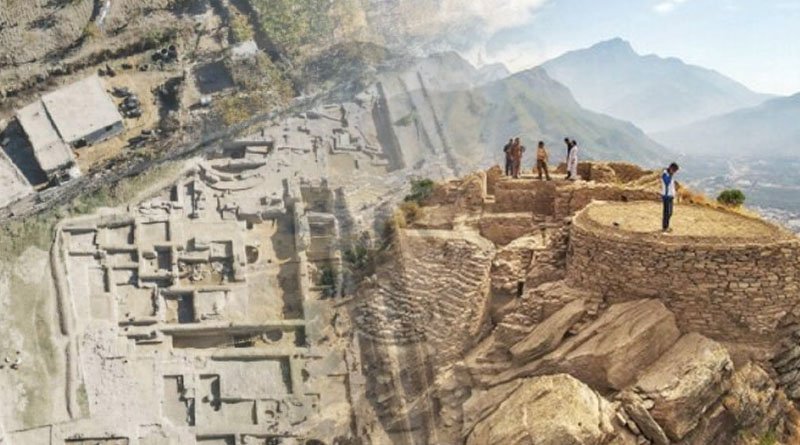The Buddhist Apsidal temple at Bazira in the Barikot tehsil was listed among top 10 archaeological discoveries in international journal “Archaeology.

The news that a Swat site was among the top 10 best archaeological discoveries announced by a renowned magazine in 2022 excited archaeologists and cultural activists.
The Buddhist Apsidal temple at Bazira in the Barikot tehsil was listed among the top ten archaeological discoveries in the international journal “Archaeology,” a publication of the Archaeological Institute of America. Archaeologists from Ca’ Foscari University and the Italian Archaeological Mission, working with the provincial department of archaeology and museums, found the oldest Buddhist temple in Apsidal last year.
Other archeological discoveries, which were placed in the list, include the pharaoh Amenhotep I’s 21st Dynasty wooden coffin decorated with flowers in Cairo Egypt, the well-preserved collection of the 2,550 wooden artefacts in the capital city of Aztecs, Mexico, the 30,000-year-old stone sculpture known as the Venus of Willendorf on the banks of the Danube River in Austria, the world’s oldest silver and gold cubes in southern Russia dating around 3500 BC, the Neolithic hunting shrine in the deserts of south-eastern Jordan, the 250 BCE old Maya ritual calendar in the ancient city of San Bartolo, Guatemala, a tomb containing the remains of a man, who occupied a powerful position in the Wari Empire dating around 650-1000 AD in Huarmey, Peru, the Mesopotamian urban development in Lagash, Iraq and the wreckage of legendary explorer Ernest Shackleton’s ship Endurance nearly 10,000 feet underwater, at the bottom of the Weddell Sea off the coast of Antarctica, where it sank in November 1915.
The director of the Italian Mission, Prof. Luca M. Olivieri, who oversaw the archaeologists who found the Apsidal temple in Bazira, expressed his joy and pride at the news
. “In spite of all the challenges, the excavations in Barikot have continued for 40 years with great dedication. For instance, I recall that the same magazine listed the Barikot site as one of the ten most endangered archaeological sites in the world at the end of 2009 due to local militancy “He informed, adding that Swat was coming out of a tragic season at the time.
Prof. Luca claimed that the Italian Archaeological Mission’s commitment to the ACT-Field School project, which included ongoing excavation and restoration activities every year, changed things. ISMEO, Ca’ Foscari University, the Directorate of Archaeology and Museums, archaeologists, the Barikot employees, the two Italian and Pakistani embassies and their consulates, the Italian Ministry of Foreign Affairs and International Cooperation, and ISMEO are all to be thanked for their assistance, he said.
He claimed that the same Swat site received a ranking 12 years later with a very different viewpoint, which was a true milestone. Additionally, he expressed gratitude to Swat’s civil society and recognised the important role the media had in raising awareness of the need to protect Barikot’s cultural heritage. The KP government will continue to be committed to its programme to acquire the entire Barikot archaeological area, which Prof. Luca called an “encouraging point.”
According to him, everyone needs to understand the special significance of the Barikot site, also known as the Bazira of Alexander the Great, especially at the local level. According to him, it needs to be preserved for both current and future generations. He claimed that Swat was now being recognized for its most exemplary cultural practices, warm welcome, and crucial place in the history of the entire Eurasian continent. He hoped that the residents of Barikot and Swat would be pleased with the news.
